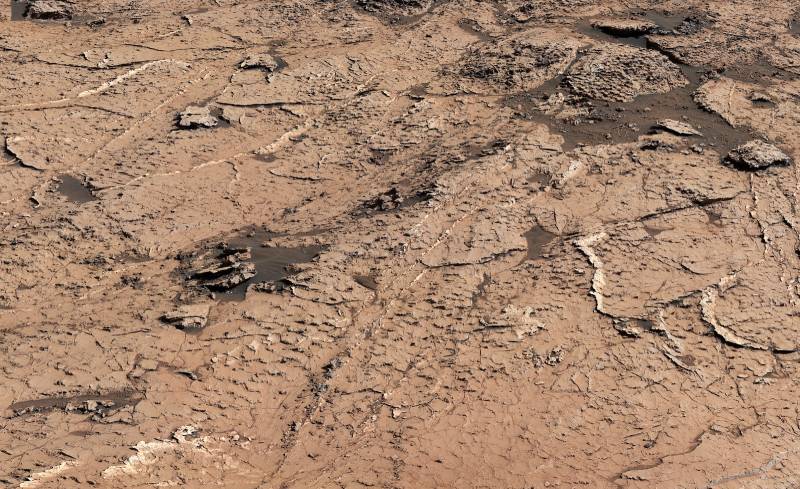Hexagonal structures on Mars serve as archivists of the planet’s former wet climate and may shed light on whether Earth’s neighbor has ever been home to microbial life.
A report based on observations made by NASA’s Curiosity rover, a mission that earlier this month marked its eleventh year of exploring Gale Crater, was published on August 9 in the journal Nature. The six-wheeled rover found fissures within the hexagonal formations in 2021 that developed “in fresh mud,” brought on by continuous and violent wet-dry cycles on the surface of ancient Mars.
These polygons suggest a significant change in the general mineral composition of Mars, which has significant ramifications for life there. This suggests that an Earth-like climatic regime and surface habitats favorable to prebiotic development may have persisted during the Noachian-Hesperian transition (3.8-3.6 billion years ago), according to the paper’s authors.
Hexagonal patterns can be seen on the ground next to a piece of the Curiosity rover in this area of the Mastcam view.
Why are these hexagons important?
A lot of data is necessary for climate models. Thank goodness, these hexagons close a gap.
Compared to what it probably was billions of years ago, Mars is rather arid now. In the past, Mars had persistently moist surface environments, but scientists don’t yet know when that climate would alternate between wet and dry like it does on Earth. Without them, hydroclimate models of ancient Mars are incomplete, and scientists are prone to arriving at “diverging” conclusions from one another.
The hexagons are a helpful tool for climatologists studying Mars because of this. Due to their initial T-shaped joints, which probably formed as the moist surface dried, the hexagons exhibit these episodic modifications. These fissures transformed into the Y-shaped joints that form the hexagonal patterns when the water receded and softened them up.
Water does not automatically correlate to life-friendly conditions, according to a NASA statement that summarizes the findings. Finesse is required.
“Although water is necessary for life, it must be consumed in moderation – neither too much nor too little. The kinds of conditions that support microbial life, such as those that permit a long-lasting lake, are different from those that scientists believe are necessary to stimulate chemical reactions that may lead to life, according to agency officials’ written report.
A balance must develop in life
The hexagonal patterns on Mars’ surface suggest that the necessary elements may have been there for the emergence of polymers, which are lengthy chains of carbon-based molecules that serve as the fundamental units of life as we know it today.
To create polymers, specific chemical processes are used. It turns out that brief periods of wet and dry circumstances, like those responsible for the hexagonal forms, can lead to the formation of polymers.
According to NASA, these cycles regulate the chemical concentrations that fuel the reactions necessary to produce these life-building ingredients.
The fresh discoveries excite scientists working on the Curiosity rover. According to Curiosity project scientist Ashwin Vasavada, “over the past 11 years, we’ve found plenty of evidence that ancient Mars could have supported microbial life.” The mission has now discovered evidence of circumstances that may have helped with the origin of life as well.
Topics #Isro #Mars #NASA #Nasa's Rover #rover








